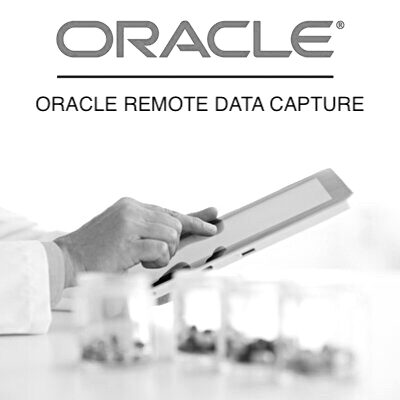Table of Contents
- Navigating the Path: Transitioning from Clinical Research Associate (CRA) to Clinical Data Management (CDM)
- Understanding the Terrain: CRA vs. CDM
- Assessing Your Assets: Leveraging CRA Experience
- Bridging the Divide: Skill Enhancement
- Networking: Building Bridges in the Industry
- Hands-On Experience: Diving into Data Management
- Certifications: Enhancing Credentials
- Crafting Your Narrative: Tailoring Your Resume and Cover Letter
- Seizing Opportunities: Applying for CDM Positions
- Continued Learning and Growth: Sustaining Momentum
- Conclusion: Embracing the Journey
- Oracle Clinical Fundamentals
- Oracle Clinical – Live Online
- Oracle Remote Data Capture
- Diploma in Clinical Data Management
Navigating the Path: Transitioning from Clinical Research Associate (CRA) to Clinical Data Management (CDM)
In the dynamic landscape of clinical research, professionals often find themselves drawn to new avenues for career growth and exploration. For Clinical Research Associates (CRAs) seeking fresh challenges and opportunities, transitioning into the realm of Clinical Data Management (CDM) can be a rewarding journey. While the shift may seem daunting at first glance, with careful planning, upskilling, and perseverance, making the leap from CRA to CDM is entirely feasible. In this comprehensive guide, we’ll delve into the steps and strategies to navigate this transition successfully.
Understanding the Terrain: CRA vs. CDM
Before embarking on any career transition, it’s essential to grasp the nuances of the destination. As a CRA, you’re likely familiar with overseeing clinical trials, ensuring compliance, and managing site activities. In contrast, Clinical Data Management professionals play a crucial role in handling and analyzing trial data, maintaining databases, and ensuring data integrity throughout the research process.
Assessing Your Assets: Leveraging CRA Experience
As a CRA, you possess a wealth of skills and knowledge that are directly applicable to CDM. Your experience in monitoring trials has honed your attention to detail, understanding of regulatory requirements, and ability to collaborate with multidisciplinary teams. Additionally, your familiarity with clinical trial protocols and data collection processes serves as a solid foundation for transitioning into data management.
Bridging the Divide: Skill Enhancement
While your CRA background provides a strong foothold, bridging the gap between roles requires acquiring additional skills specific to CDM. Begin by familiarizing yourself with data management software such as Oracle Clinical or Medidata Rave. Explore online courses, workshops, and certifications tailored to CDM to gain proficiency in database designing, query management, and CDISC standards.
Networking: Building Bridges in the Industry
Networking serves as a potent tool for career advancement. Leverage your existing connections within the clinical research sphere to gain insights into the world of CDM. Attend industry conferences, join professional associations, and engage in online forums to expand your network and seek mentorship from seasoned CDM professionals. Building meaningful relationships can open doors to new opportunities and invaluable guidance.
Hands-On Experience: Diving into Data Management
Gaining practical experience is paramount to solidifying your transition into CDM. Volunteer for CDM-related tasks within your current organization, collaborate on cross-functional projects, or seek part-time or contract roles in data management. Embrace every opportunity to immerse yourself in data handling, database management, and quality assurance processes, thereby demonstrating your commitment and proficiency in CDM.
Certifications: Enhancing Credentials
Certifications serve as tangible evidence of your expertise and dedication to your chosen field. Consider pursuing certifications such as Certified Clinical Data Manager (CCDM) or Certified Clinical Data Manager in Training (CDM-IT) to bolster your credentials in CDM. These certifications not only validate your knowledge but also enhance your marketability and credibility as a CDM professional. It would be worthwhile to get hands-on experience on a clinical data management system such as Oracle Clinical.
Crafting Your Narrative: Tailoring Your Resume and Cover Letter
As you venture into the realm of CDM, it’s crucial to articulate your transition effectively on your resume and cover letter. Highlight transferable skills and experiences from your CRA role that align with the requirements of CDM positions. Emphasize your data management acumen, regulatory compliance expertise, and collaborative prowess to showcase your suitability for roles in CDM.
Seizing Opportunities: Applying for CDM Positions
Armed with newfound skills and credentials, it’s time to embark on your job search in CDM. Target entry-level or junior CDM positions that align with your career aspirations and skill level. Tailor your applications to each role, emphasizing your relevant experience and eagerness to contribute to the field of data management. Prepare diligently for interviews, demonstrating your understanding of CDM principles and your passion for the role.
Continued Learning and Growth: Sustaining Momentum
Transitioning careers is not the end of the journey but rather the beginning of a new chapter. Stay proactive in your professional development by staying abreast of emerging trends, attending workshops and webinars, and pursuing further education or certifications in CDM. Cultivate a growth mindset, embrace challenges, and remain adaptable as you progress in your career in Clinical Data Management.
Conclusion: Embracing the Journey
Transitioning from a Clinical Research Associate to a Clinical Data Management professional is a testament to your resilience, adaptability, and passion for continuous growth. By leveraging your existing skills, acquiring new competencies, and fostering meaningful connections within the industry, you can chart a successful course into the realm of data management. Embrace the challenges, seize the opportunities, and embark on this transformative journey with confidence and determination.
In conclusion, transitioning from a CRA to CDM requires careful planning, skill enhancement, and a proactive approach to career development. By leveraging your existing experience, acquiring new skills, and seizing opportunities for growth, you can navigate this transition successfully and embark on a fulfilling career in Clinical Data Management.
You may be interested in…




